During my last visit to Sicily I took a trip out to the beautiful island of Favignana to explore the old Tonnara owned by the Florio* family, which has now been turned into a museum.
What is a Tonnara?
In case you are not familiar with the term Tonnara, it is used to describe the complex technique traditionally used to fish tunas in the Mediterranean sea. The Tonnara is the setup of nets in which the tunas get caught, but the term is also often used to describe the establishment in which the tuna gets processed and in which all the equipment gets stored.
This complex fishing technique is very old and it is believed to have been invented by the Phoenicians and then spread through the Mediterranean by the Arabs.
During the spring the Bluefin tuna enters the Mediterranean sea through Gibraltar, and it starts its mating season. As the large schools of tuna come closer to the coast (usually around april-may), a system of nets is positioned into the sea a few miles from the shore.
The tunas encounter a wall of nets which forces them to enter a sort of labyrinth made of 9 chambers. As the various chambers get full, the tunas are moved onto the next chamber until they all end up in the final chamber called “cuoppo” or “camera della morte” (death chamber). This final chamber is the only one that has a net floor.
La Mattanza
The spiritual and practical leader of the Tonnara is called Rais (an Arabic word meaning chief). He decides when and where to set up the Tonnara, and he also makes a call on when to start the Mattanza. Mattanza is a word of Spanish origins that means “the massacre”, and it is the aptly named final phase of the Tonnara.
When the Mattanza begins, the floor of the cuoppo gets slowly raised, and as the tunas struggle for space, they go on a frenzy and end up mostly killing each other. The sea turns red with blood and all around the cuoppo there are boats full of tonnaroti (the workers of the tonnara) who lift the heavy nets at the rhythm of a work song, and then they harpoon and lift the big tunas onto the boats.
You can watch a short video of some of the phases of the Tonnara, as preserved in the Luce archives.
Disclaimer: The archivio “Luce” was setup during the fascist regime in Italy. One of its functions was to celebrate Italy’s traditions by romanticising them in true classic nationalist style, and this video fits that model.
After the mattanza the tunas are brought back to shore and washed in the sea water to get rid of most of the blood (you can see that in the video above).
After that they get cut into pieces and cooked in these giant pots.
In the museum there is a room where they have holograms of people that used to work at the Florio Tonnara, telling stories about their work and life. I found it extremely moving to see the pride of these men and women, the struggle, their hard work and the difficult lives they lived. One example is this man talking about the love for the knife that he used to cut tunas for 35 years!
Finally the cooked tuna pieces are cleaned, and separated into tins, filled with oil, sealed and sold.
Tuna fishing was a huge business for Sicily and many other parts of the Mediterranean. In the Trapani area it gave work to a large amount of men (mostly working as Tonnaroti) and women (mostly working in the factory processing the tunas) and it sustained many families in the region.
The mattanza was a bloodbath, perhaps the quickest and most efficient way to kill a huge amount of enormous fish, and it is something that nowadays seems unthinkable and unnecessary cruel. During the 1980’s animal rights organisations started bringing it to the media attention and protesting against it.
Nevertheless it was actually the most sustainable way of fishing tuna. It continued for thousands of years and it happened only once per year, so the sea had plenty of time to replenish.
In another hologram a Tonnaroto, who is very striking looking because of his long blond curly hair says: “ Nobody killed the tunas for pleasure, for fun or for show like they do in the corrida. We killed the tuna because it was our only way to survive, and it was like bread for the island”.
The traditional Tonnara started becoming unsustainable from the late 80’s onwards, when the alternative fishing techniques were mostly responsible for bringing the bluefin tuna to almost extinction.
These days there are no more active traditional Tonnare in Sicily (although I heard that they still happen in Sardinia).
What is “fresh” fish anyway?
A short parenthesis here that might come to be a shock to many. Most the of the fish that you eat in a sushi restaurant (and not only) has previously been frozen. The idea of “fresh” fish is a myth that almost makes no sense in the contemporary food industry world.
First of all a fish that has just been killed has “rigor mortis”, which causes its flesh to be quite tough, so you need to wait a certain amount of time before you eat it, even if you catch it yourself (in the same way you need to dry age beef before you can eat it).
Most fish has also probably suffered a quite violent and stressful death, and that causes its flesh consistency to be altered and tougher.
The Japanese have a technique called Ikejime, which is believed to be the most rapid and “humane” way of killing fish, in which the animal does not know what is happening, and the result is a completely different texture in the meat.
Secondly most boats that catch large oceanic fish are out at sea for 15-20 days at a time, so obviously they have to freeze the fish they catch!
Most sushi purists will disagree, but there is nothing wrong with freezing fish as long as it’s done properly and quickly. I was mindblown when I learned that a freshly caught fish that gets frozen at -60C, can last up to three years.
Furthermore flash freezing fish is the only way to get rid of certain parasites and worms that can be found in wild fish, and that can be extremely harmful for the human body, so in many countries (for example in Italy), fish served raw has to have been previously flash frozen for a certain amount of time by law.
It is a long and complicated conversation for here perhaps, but I will mention a few things. The popularity of sushi and the all Japanese passion for extremely fat bluefin tuna are probably responsible for the skyrocketing of market prices. Just to give you an idea, one bluefin tuna was sold in Japan for 3.1 million $ in 2019.
The rise of prices generated a frenzy for high quality bluefin tuna, causing all sorts of illegal overfishing. It was also probably instrumental into the development and the popularity of tuna farms. Farmed tuna is not born in captivity as people might think, these are wild fish captured at sea, brought into large nets and fattened up to an inch of having a heart attack. The tunas were chased around the Mediterranean (especially in international waters), and the overfishing didn’t allow any time for the sea to replenish, causing the tunas to become smaller and smaller and scarcer year after year.
I am told that the trend has changed, and that the European union has imposed very strict rules in the last few decades, so that the situation for bluefin tuna is looking a bit more optimistic right now.
You should perhaps be aware that most tuna consumed around the world is the less endangered oceanic yellowin tuna, but I would advise to always investigate and ask yourself a few questions when you are offered bluefin tuna in a restaurant.
The pig of the sea
Tuna was often described as the pig of the sea in these areas. This is because like for the pig, every single part of the animal was eaten and it fed families for long stretches of time. In this drawing you can see the names of the different parts of the animal in Italian.
The most prized cut these days is of course the Ventresca, which is the lower belly of the tuna (what the Japanese call Otoro). The ventresca is very fat and almost buttery, so some people prefer the Tarantello, which is the back part of the belly (Chutoro in Japan). This part is still quite fat but perhaps a bit more balanced. Interestingly enough this wasn’t the case going back even just a 100 years, when the ventresca was considered too fat and the upper leaner loins of the tuna were by far the superior cut.
Before refrigeration and tinning techniques, people conserved fish in salt. They also figured out ways of curing organs and making insaccati (the word used for hams and salami) so that they would last for long periods.
One classic case is the very popular “bottarga”, or tuna roe. Bottarga are not just the eggs of the tuna, it’s in fact the entire ovary of a female tuna that has been salted and pressed.
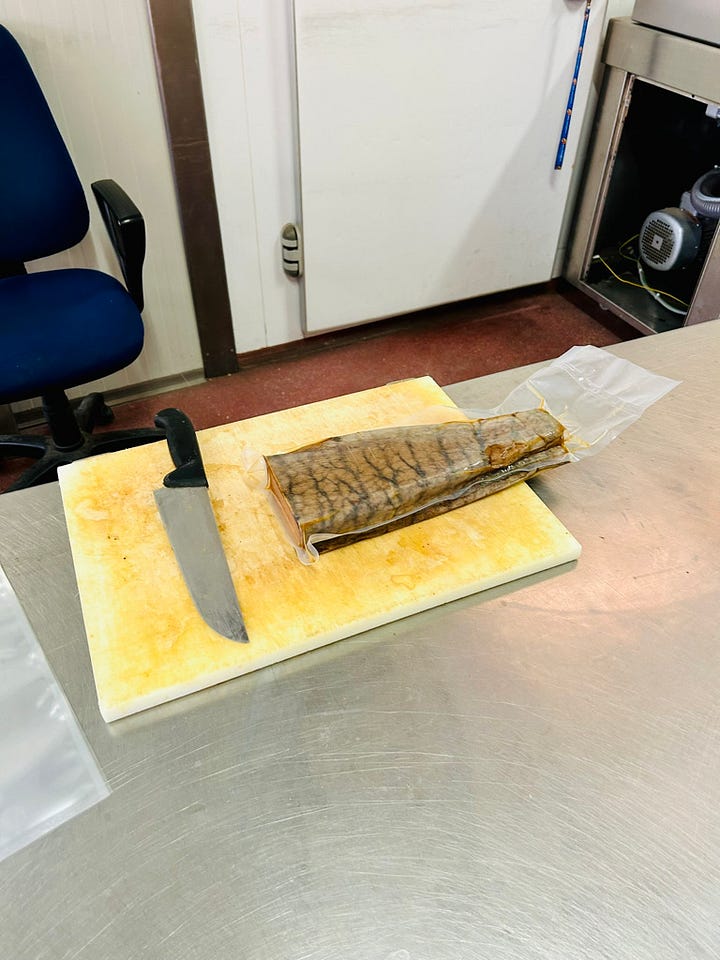
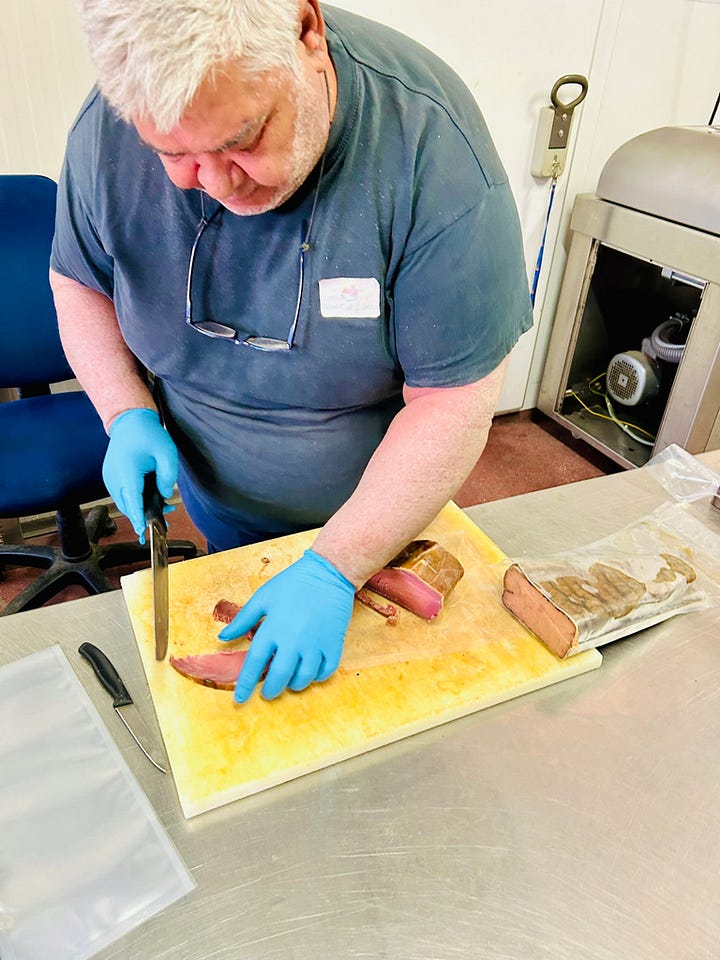
Many other organs were eaten too, especially by poor people that couldn’t afford the fancier cuts of tuna. They have become more popular again these days, and you can find them in some specialised shops. You can see some of these in the picture below, and please do not freak out at the idea of the tuna spermsack…it is the male equivalent of the tuna ovary after all!
One of my grandmother’s sisters married Nino Castiglione, who at the time was known as “Il re dei tonni” (the king of tunas):
Nino came from a humble family of tuna sellers, but during his lifetime he became one of the most important tuna entrepreneurs in the Trapani region.
He started as a tuna merchant, but expanded to own a factory for processing the tuna, and later he run his own tonnara. The tonnara stopped in the 1980’s and Nino is long gone, but the tuna processing business is still very active with his family, so their company deals mostly with cooking and tinning yellowfin tuna for many commercial brands in Italy.
I paid a visit to the factory and was quite overwhelmed by the sheer size of the production.
It was interesting being here after visiting the 19th century tonnara museum, and to realise how the processes are the same but how technology has changed dramatically the output volume. One noticeable thing was that in an incredibly automated factory, some of the operations still needs to be done by hand, namely the cleaning of the cooked fish right before they are put into the tins.
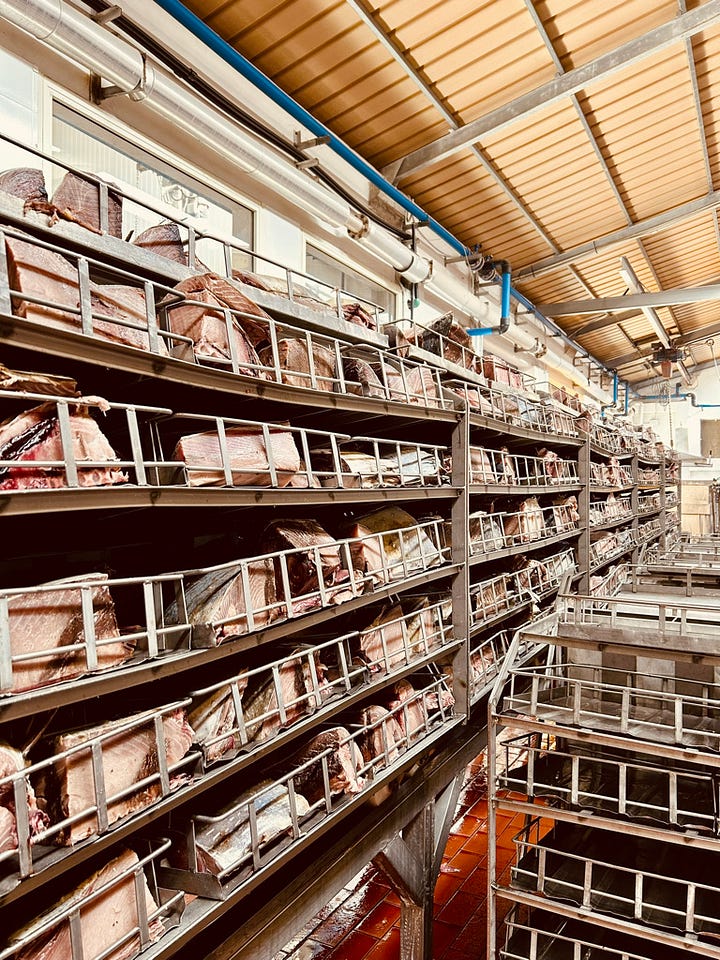

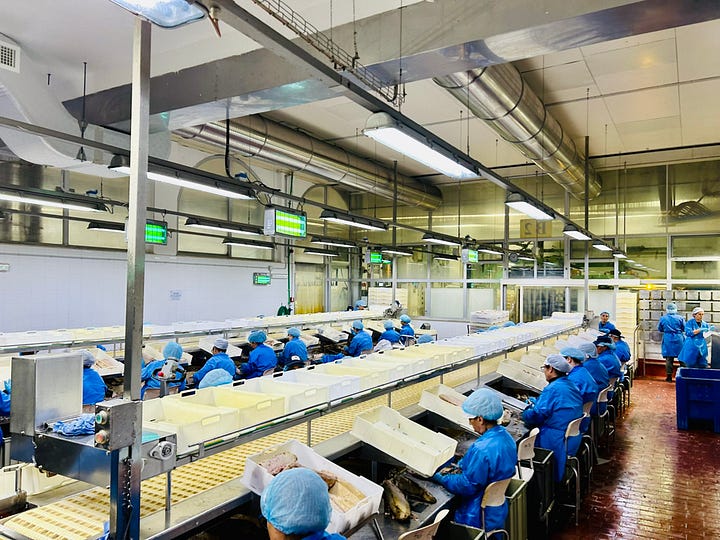

I am sure I will get back onto the tuna subject in the future, as it is something that feels very close to my heart and family. Please let know if you have any questions here below.
*The Florios were one of the most powerful families in Sicily (and in Italy) in the 19th century. They are mostly remembered for the production of their Marsala fortified wine, but at the time they were involved in politics and many businesses such as maritime transport and tuna fishing. If you are interested in the history of this family you should read the best seller saga historical novels written by Trapanese author Stefania Auci entitled “I Leoni di Sicilia” (The Lions of Sicily). It has been translated into many languages and made into a tv series available on Disney+.




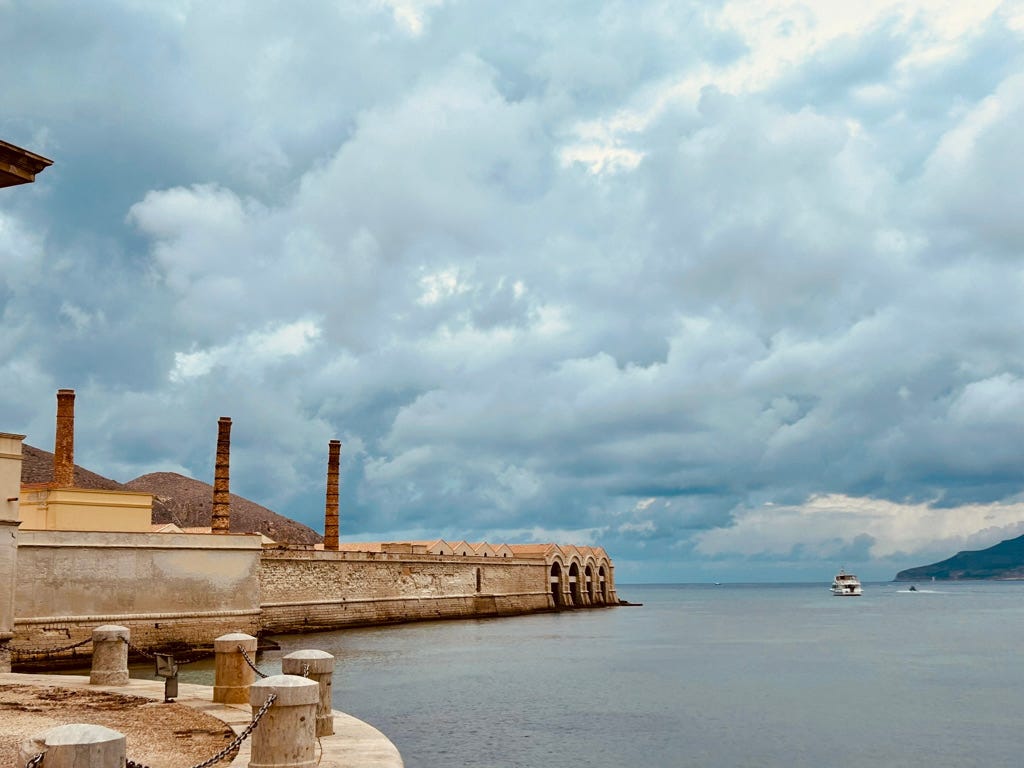
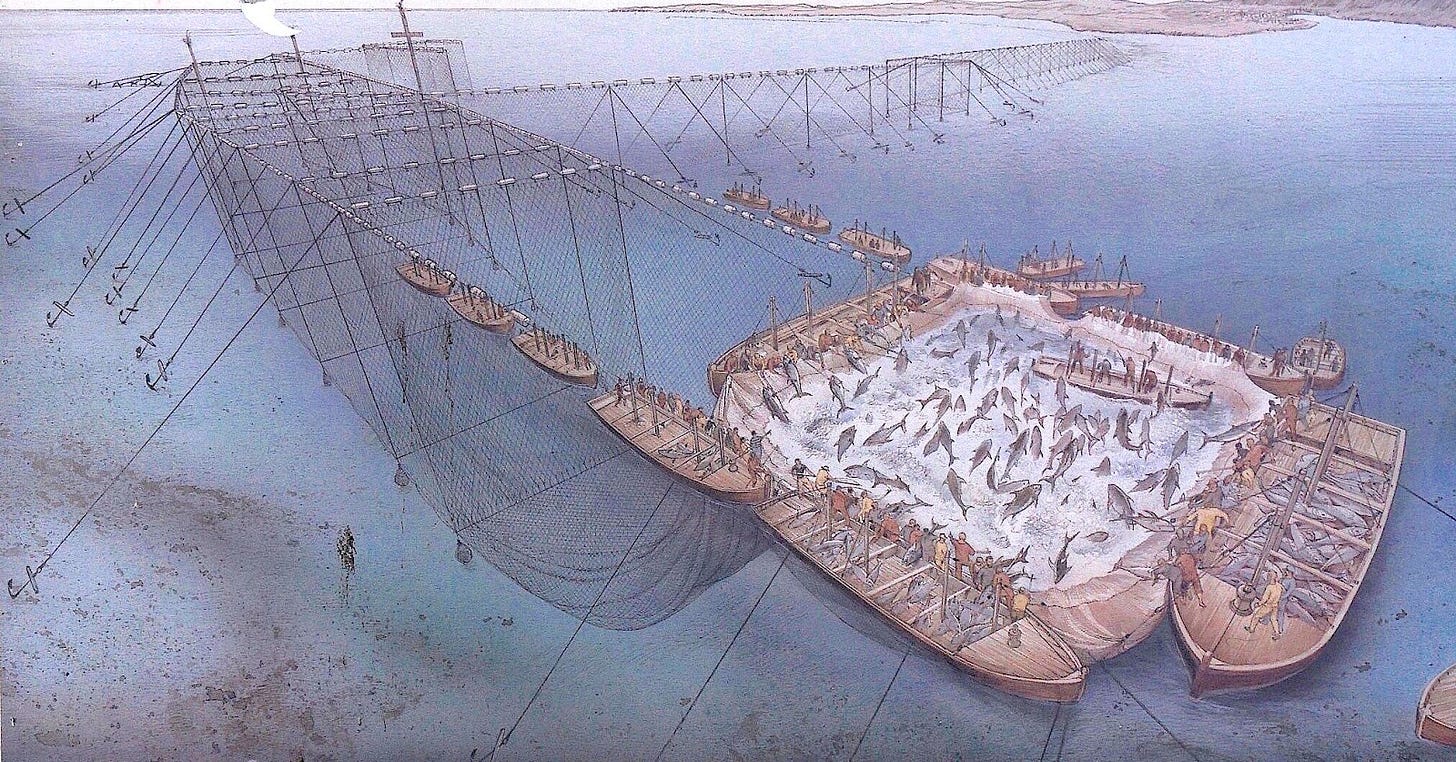


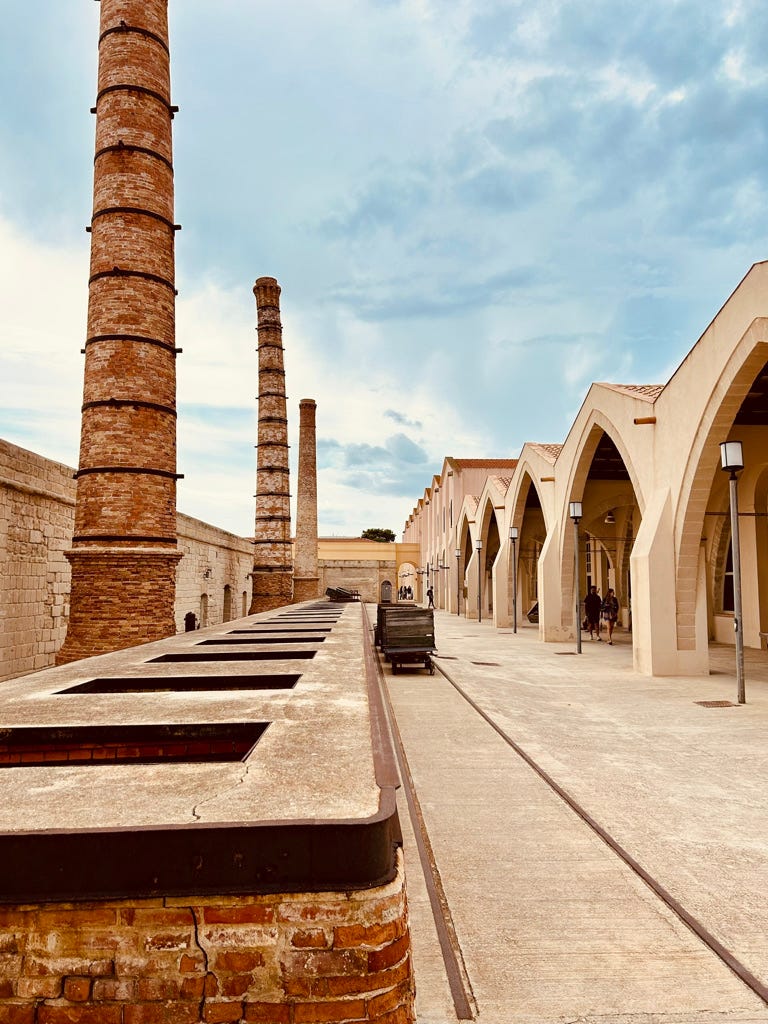
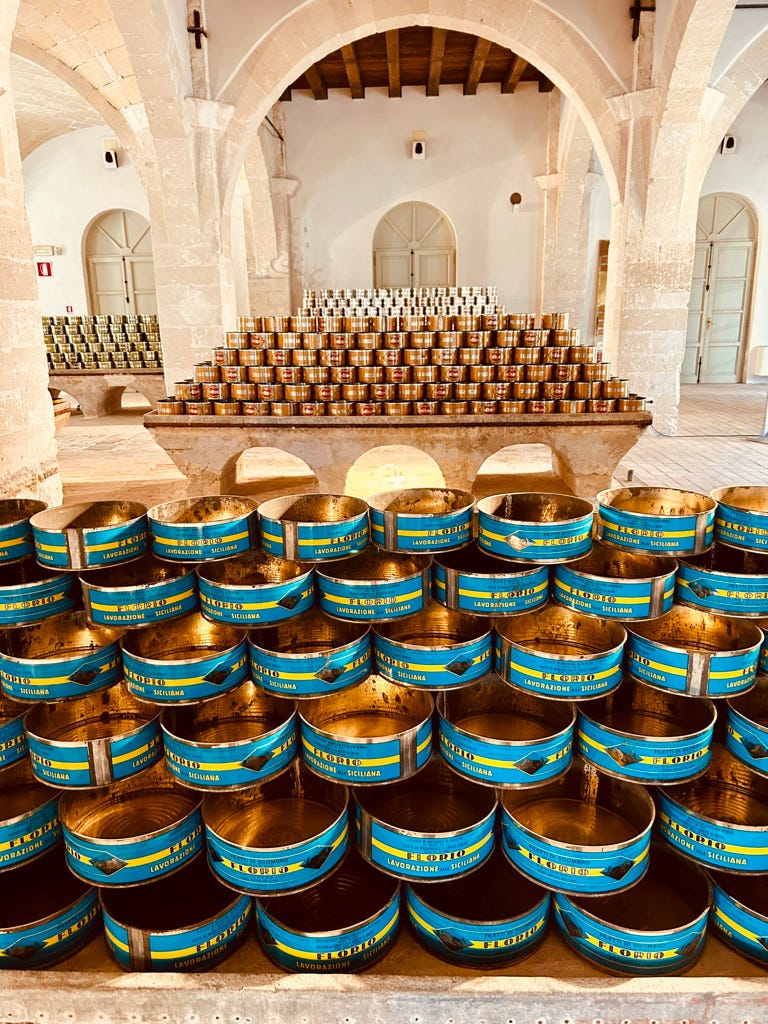


This is an incredible story Francesco; you could easily make a TV documentary on this that would be absolutely gripping.
I learned so much from this. Thank you! Everyone tells me that I would love Favignana, but Ponza stole my heart & I never venture further south. Last winter I did visit the wonderful palace in Palermo where The Lions of Sicily was filmed.